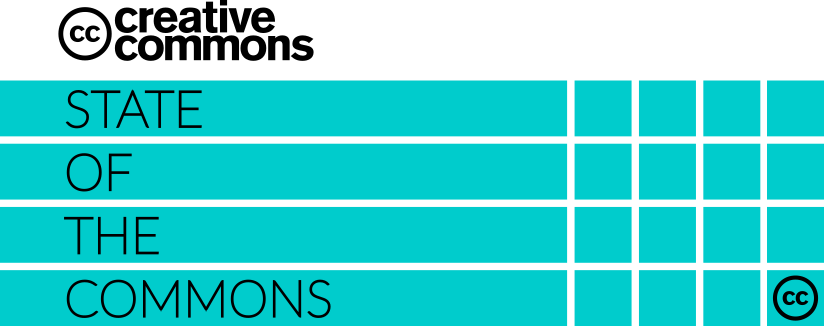

Collaboration, sharing, and cooperation are a driving force for human evolution. Creative Commoners have known this fact all along, and recently there has been a flurry of new research to explain why. We are hardwired for sharing. Harvard professor on evolutionary dynamics Martin Nowak calls it the essential “snuggle for survival” – evidence that sharing is not just a selfless act. Sharing has concurrent and lasting benefits, multiplied for the giver, the receiver, and communities at large.
The online communities that we’ve created together are a global platform for sharing. If we want to live in a digital world that is fair, diverse, vibrant, serendipitous, and safe for everyone, we will have to choose to make it that way. If that world is going to be accessible, equitable, and full of innovation and opportunity, it will require our leadership to foster and defend these ideals. Founded in 2001, Creative Commons has created legal and technical infrastructure that is fundamental to the Web we know and love. Today, our work goes beyond the ubiquitous CC licenses to foster cooperation and sharing, support collaborative communities, and drive engagement across the spectrum of open knowledge and free culture.
Creative Commons is a global charity, with an powerful affiliate network of researchers, activists, legal, education and policy advocates, and volunteers who serve as CC representatives in over 85 countries. Together, we lead this ever-growing global movement. Whether it’s open education, open data, science, research, music, video, photography, or public policy, we are putting sharing and collaboration at the heart of the Web. In doing so, we are much closer to realizing our vision: unlocking the full potential of the Internet to drive a new era of development, growth, and productivity.
I am proud to share with you our 2015 State of the Commons report, our best effort to measure the immeasurable scope of the commons by looking at the CC licensed content, along with content marked as public domain, that comprise the slice of the commons powered by CC tools. We are proud to be a leader in the commons movement, and we hope you will join us as we celebrate all we have accomplished together this year.
Ryan Merkley
CEO, Creative Commons
@ryanmerkley
CC licensed works have nearly tripled in the last 5 years.
| Total licensed works | Year |
|---|---|
| 140 million | 2006 |
| 400 million | 2010 |
| 882 million | 2014 |
| 1.1 billion | 2015 |
CC and its suite of licenses are the global standard for legal sharing, embedded in major content platforms from Wikimedia to Europeana, and adopted by foundations and governments from the Bill and Melinda Gates Foundation to the White House.
Note: Data includes content licensed with the full CC license suite, along with content marked with CC public domain tools. This is a low bound estimate based on what we could count. Dig into our data sources.
| License/tool | Percentage of works | Free Culture License? |
|---|---|---|
| CC0, Public Domain Mark + retired PD tool | 3% | Yes |
| CC Attribution (CC BY) | 24% | Yes |
| CC Attribution ShareAlike (CC BY SA) | 37% | Yes |
| CC Attributon NoDerivs (CC BY ND) | 2% | No |
| CC Attribution Non Commercial (CC BY NC) | 6% | No |
| CC Attribution Non Commercial ShareAlike (CC BY-NC-SA) | 14% | No |
| CC Attribution Non Commercial NoDerivs (CC BY NC ND) | 14% | No |
From more open to more restrictive – less restrictive FREE CULTURE licenses allow for both commercial use and adaptations.
Note: Data includes content licensed with the full CC license suite and marked with our public domain tools. Dig into our data sources.
| Year | Retired PD tool | PDM | CC0 | Total |
|---|---|---|---|---|
| 2006 | 3.2 mill. | - | - | 3.2 mill. |
| 2014 | 5.7 mill. | 1.5 mill. | 10.3 mill. | 17.5 mill. |
| 2015 | 10 mill. | 2.6 mill. | 22.3 mill. | 34.9 mill. |
Note: Data includes content under the CC0 public domain dedication and Public Domain Mark, but not unmarked material in the public domain. Dig into our data sources.
 = 1 Billion
= 1 Billion
Note: Data tracks downloads on CC license buttons, or the number of times CC licensed content was viewed on a web page. Dig into our data sources.
Creative Commons is a truly international movement with active communities on every continent (yes, even Antarctica). A significant milestone was the 2013 launch of Version 4.0 and CC’s first official translation policy for internationalizing the license suite. To date, the 4.0 license suite has been officially translated into 7 languages, with 3 more to be published in 2015.
| (العربية) (Arabic) |
| беларускі (Belarusian) |
| Català (Catalan) |
| 中国 (Chinese*) |
| hrvatski (Croatian) |
| čeština (Czech) |
| danske (Danish) |
| Nederlands (Dutch) |
| English (English*) |
| Esperanton (Esperanto) |
| suomi (Finnish) |
| français (French*) |
| galego (Galician) |
| Deutsche (German*) |
| ελληνικά (Greek) |
| Magyar (Hungarian) |
| bahasa Indones (Indonesian) |
| italiano (Italian) |
| 日本語 (Japanese) |
| 한국어 (Korean) |
| Latvijā (Latvian) |
| Lietuvos (Lithuanian) |
| Melayu (Malay) |
| te reo Maori (Maori) |
| norsk (Norwegian) |
| فارسي (Persian/Farsi) |
| polski (Polish) |
| português (Portuguese) |
| Română (Romanian) |
| Русский (Russian) |
| Español (Spanish*) |
| svenska (Swedish) |
| Türk (Turkish) |
| Український (Ukrainian) |
Note: Data reflects total views of CC deed pages from Jan 1, 2005 through Nov 3, 2015. * Category includes variations on that language for simplicity, eg. Chinese includes simplified and traditional Chinese. Dig into our data sources.
| Content type | Number of works |
|---|---|
| Images (photos, artworks) | 391 million |
| Open Educational Resources | 76,000 |
| Research (journal articles) | 1.4 million |
| Audio tracks | 4 million |
| Videos | 18.4 million |
| Texts (articles, stories, documents) | 46.9 million |
| Other (multimedia, 3D) | 23,000 |
Note: Data only reflects media on 16 platforms + Directory of Open Access Journals, just a slice of all available CC media on the web. Dig into our data sources.

| Platform | Number of works in the commons |
|---|---|
| Flickr | 356 million photos |
| Bandcamp | 1.95 million tracks |
| Wikipedia | 35.9 million articles |
| YouTube | 13 million videos |
| Jamendo | 496,000 tracks |
| 500px | 661,000 photos |
| Vimeo | 5 million videos |
| Internet Archive | 2 million files |
| FMA | 86,000 tracks |
| Wikimedia Commons | 21.6 million media files |
| Tribe of Noise | 29,000 tracks |
| PLOS | 140,000 articles* |
| Europeana | 20.9 million digital objects |
| Skills Commons | 24,000 career training materials |
| Boundless | 49,000 open educational resources |
| MIT opencourseware | 2,300 courses |
(* Total Open Access articles across the web under CC BY, 675,000; under any CC license 1.3 million)
In 2015, more platforms added CC license options for their users, including Medium and edX, with Flickr adding support for CC0 and the Public Domain Mark. Expect growth on these platforms in 2016.
Note: Data reflects total CC licensed works on each platform, only 16 websites out of millions. Dig into our data sources.
CC is at the very heart of the open education movement; our licenses put the “open” in Open Educational Resources (OER). CC and our open education partners are leading an international OER campaign to make it easy for educators and students around the world to freely share curriculum, textbooks and research at near zero cost. CC is also helping governments add open licensing requirements on publicly funded educational resources.
Countries with legislation, policies, or funder mandates at the national, provincial/state, or institutional level that lead to the creation, increased use, or support for improving OER.
Note: *European Union is a collection of member states but included in this country list for reporting purposes; Data reflects savings for students in Canada and the United States; Data provided by the open education community. Dig into our data sources.
CC continues to lead the way in advocating for major philanthropic foundations to adopt open licensing policies. Foundations can exponentially expand the impact and reach of their grantmaking through a “default open” policy that ensures that all grantees openly license any digital outputs of their work, an important shift that has a tremendous ripple effect.


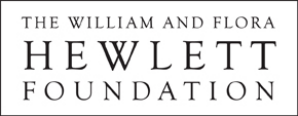
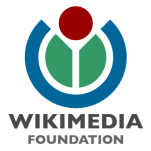

Creative Commons has fundamentally changed the way the world can share, use, and preserve our cultural heritage now and generations to come.




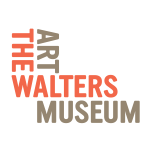

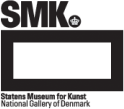
Creative Commons Affiliate Network includes over 500 researchers, activists, legal, education and policy advocates, and volunteers who serve as CC representatives in over 85 countries. Working alongside non-governmental institutions, universities, and public agencies, CC affiliates employ region-specific approaches to copyright and intellectual property that help solve local and global challenges. CC affiliates impact the growth and quality of the commons across all sectors from education, science, and research, to cultural heritage, data, design, and hardware.
CC affiliates from across the Middle East and North Africa gather in two historic meetings to restructure, build capacity, share best practices, and officially translate the latest version of the CC license suite into Arabic.
Al Jazeera English integrates CC licensed interactive material and infographics from Al Jazeera Labs, including an Arabic translation of the The Data Journalism Handbook.
South Africa publicly releases 17 years of parliamentary files under CC BY, including bills, documents, and audio recordings.
CC African Affiliates and WikiAfrica launch the 2nd annual Wiki Loves Africa campaign successfully crowdsourcing more than 9,000 CC licensed images covering African fashion and design.
Affiliates team up with local partners, the African Storybook Project and Book Dash to provide CC licensed children’s books in 62 African languages across Kenya, Uganda, Lesotho and South Africa.
CC Portugal launches a “CC Toolkit for Business” outlining 6 economic benefits of using CC licenses.
CC affiliates across Europe collaborate with national lawmakers to implement the European Union’s Directive on Collective Rights Management. The directive requires collecting societies to allow their members to self-license their works under noncommercial terms, providing CC musicians with more control over how to share and manage their music.
CC Korea hosts Creative Commons’ 2015 Global Summit in Seoul, featuring workshops, panels, and special keynotes by Kilnam Chon, Julia Reda, Lawrence Lessig, and more.
Chinese speaking affiliates collaborate across cultures and time zones to prepare for the official translation of the 4.0 license suite.
The Museum of Modern Art (MoMA) in New York welcomes the CC logo into its permanent collection, featuring it alongside the @ symbol and the International Symbol for Recycling in the exhibit, “This Is for Everyone: Design Experiments for the Common Good.”
Grantees of U.S. Department of Labor’s $2 billion career training program contribute their first round of OER to the Skills Commons platform under CC BY.
CC Latin America’s mini-grants program, now in its second year, awarded funds to kick off new affiliate projects in El Salvador, Costa Rica, and Paraguay, including a digital scanner for educational institutions to provide online access to resources; a free digital newsletter covering CC topics for Central America; and a mobile application featuring basic information about CC licenses.
CC Uruguay translates the Open Licensing Policy Toolkit into Spanish to encourage Latin American governments to create, adopt and implement open policies.
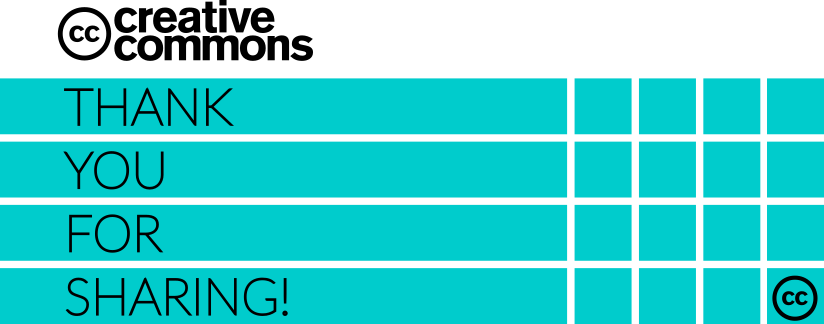
It’s been a remarkable year, most notably for the more than 1.1 billion works under one of the CC licenses, CC0, or the public domain mark. CC licenses offer an elegant solution; a release valve to the constraints of copyright. But it’s much bigger than that: Creative Commons has become a steward of our global commons, a universe of openly-licensed content that has the power to spark everyday ideas and solve global challenges. We’ve unlocked the door to an alternate reality of free and open content, powered by millions of creators who share our values.
But the key challenge facing the commons today isn’t quantity – it’s usability, vibrancy, and collaboration. Today’s web is social and interconnected, and it has completely changed the way we share, tell stories, and build communities. While integral to many kinds of creativity and sharing, Creative Commons has yet to fully activate the content and creators in our movement. We need our contributors to be able to talk to each other, find new content, give feedback, offer gratitude, get analytics, and build networks around the content they are creating. We need to light up the global commons.
We hope you’ll join us and help build a more creative, free, and open commons. Together we’ll be much closer to realizing our vision: unlocking the full potential of the Internet to drive a new era of development, growth, and productivity.
Thank you to our Creative Commons Affiliate Network who work tirelessly everyday to protect and enrich the commons. We also owe our thanks to Google and the many CC platforms, partners, institutions, and individuals from the broader open web community who contributed the essential data and information for this report. Simply put, our 2015 State of the Commons report would not be possible without your valuable contributions. Thank you!
Tune in to all things Creative Commons. Follow us on Twitter & Facebook.